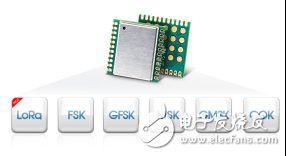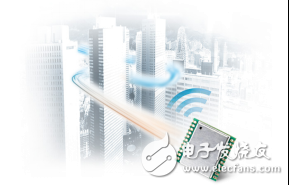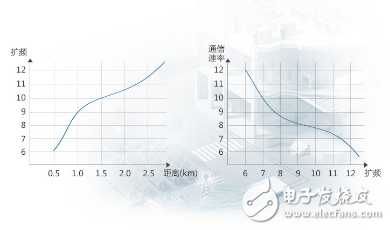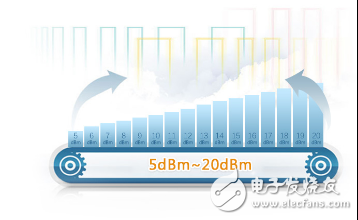LoRa is a radio spread spectrum modulation and demodulation technology designed for long-range, low-power wireless communication. It is compatible with various modulation schemes such as FSK (Frequency Shift Keying), GMSK (Gaussian Minimum Shift Keying), and BPSK (Binary Phase Shift Keying), among others. This compatibility allows LoRa to stand out in the field of wireless communication by offering a unique blend of performance and flexibility.
The technology integrates digital spread spectrum techniques, advanced digital signal processing, and forward error correction coding, which were once exclusive to military-grade communication systems. With the introduction of LoRa, these capabilities have become accessible in embedded wireless applications, transforming the industry and enabling new use cases in IoT and smart cities.

**Figure 1: Wireless products that support LoRa modulation technology**
Forward error correction (FEC) plays a crucial role in improving data reliability. By adding redundant information to the data stream, FEC enables the receiver to detect and correct errors without requiring retransmission. This is especially beneficial in environments where multipath fading causes sudden data corruption, making it a powerful tool for maintaining stable communication links.

**Figure 2: Strong adaptability to complex environments**
Once a packet is formed and FEC is applied, the data is sent to a digital spread spectrum modulator. This modulator spreads each bit of the packet into multiple chips, depending on the spreading factor. LoRa supports spreading factors ranging from 64 to 4096 chips per bit, with the AngelBlocks modem using the highest setting of 4096 chips per bit. In comparison, ZigBee typically uses only 10–12 chips per bit, highlighting LoRa’s superior ability to handle weak signals over long distances.

**Figure 3: Spread spectrum signals are transmitted in noise**
By using a high spreading factor, LoRa can transmit small amounts of data across a wide frequency range. When viewed on a spectrum analyzer, the signal appears as background noise, but unlike random noise, it carries structured data that can be decoded at the receiving end. The higher the spreading factor, the better the system can extract meaningful data from the noise, enhancing signal robustness.

**Figure 4: Adjusting the spreading factor to obtain a longer communication distance**
LoRa excels in low signal-to-noise ratio (SNR) environments. While a typical GFSK receiver requires an SNR of at least 8dB for reliable demodulation, LoRa can successfully decode signals with an SNR as low as -20dB. This results in a 28dB improvement, which translates to significantly greater communication range. In outdoor settings, a 6dB increase can double the transmission distance, making LoRa ideal for rural or remote applications.
To fairly compare the performance of different wireless technologies, engineers use a metric called "link budget." This calculation considers all factors affecting signal strength at the receiver, including transmit power and receiver sensitivity. A higher link budget means a stronger and more reliable connection.

**Figure 5: Flexible Adjustable Power Level**
AngelBlocks, a LoRa-based device, operates with a transmit power of 100mW (20dBm) and a receiver sensitivity of -129dBm, resulting in a total link budget of 149dB. In contrast, GFSK systems with excellent sensitivity (-110dBm) would need 5W (37dBm) of transmit power to match this link budget. Most GFSK devices have lower sensitivity, around -103dBm, which would require over 36W of power to achieve similar performance.
Therefore, LoRa offers a much more energy-efficient solution, allowing for extended coverage with minimal power consumption. This makes it an ideal choice for applications where battery life and long-range communication are critical—such as in smart agriculture, asset tracking, and industrial monitoring.
Automotive Rocker Switches
Automotive Rocker Switches
Automotive Rocker Switches, also called Car Rocker Switches, is the most common type of control switch for switching and starting the car's internal equipment.
The types of Yeswitch Momentary Rocker Switches are relatively complete, and most of the products have good dust-proof and waterproof characteristics. At present, our company maintains good trade relations with many automobile manufacturers.

Based on DC current and voltage, Yeswitch Rocker Switches can be widely used in DC voltage control equipment, such as lawn mowers, forklifts, medical equipment, communication equipment and other special industries.
It has good hand feeling and excellent continuity,also can be equipped with LED indicators. For example, it can be used to control the car lights. Furthermore,It can be set on the operation button surface, which has a beautiful appearance.

Moreover, In order to save the processing difficulties of the customer during the use of the wiring process, we have launching a quick plug connector to retain the length of the harness according to customer needs, which is convenient for customers to use.
Automotive Rocker Switch,Mini Rocker Switches,Antomotive Rocker Switch Types,Custom Rocker Switches
YESWITCH ELECTRONICS CO., LTD. , https://www.yeswitches.com

